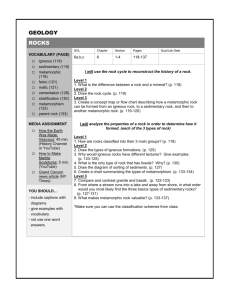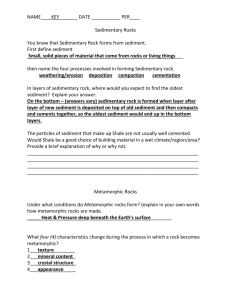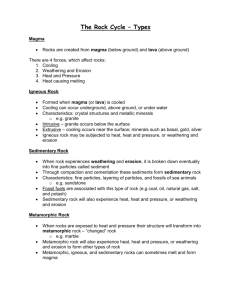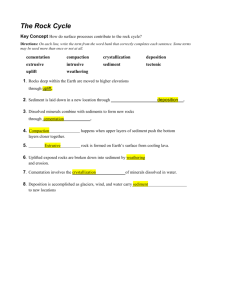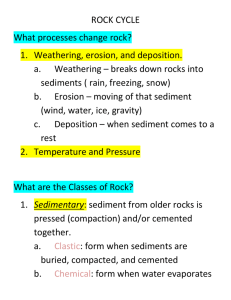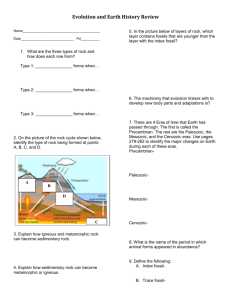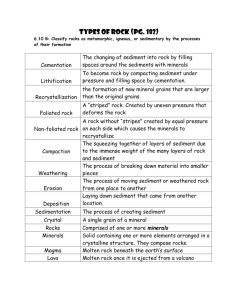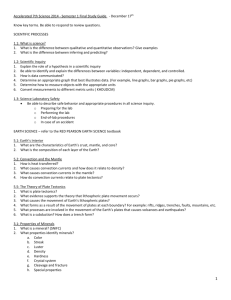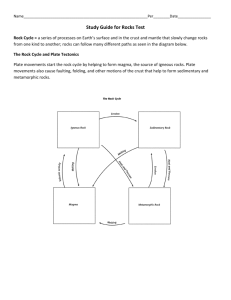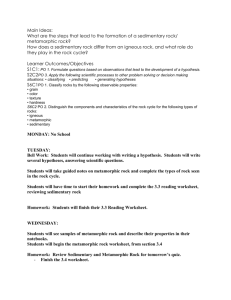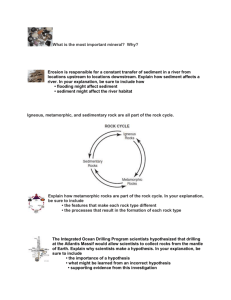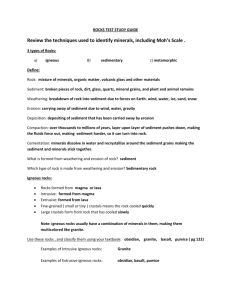Rock type notes
advertisement
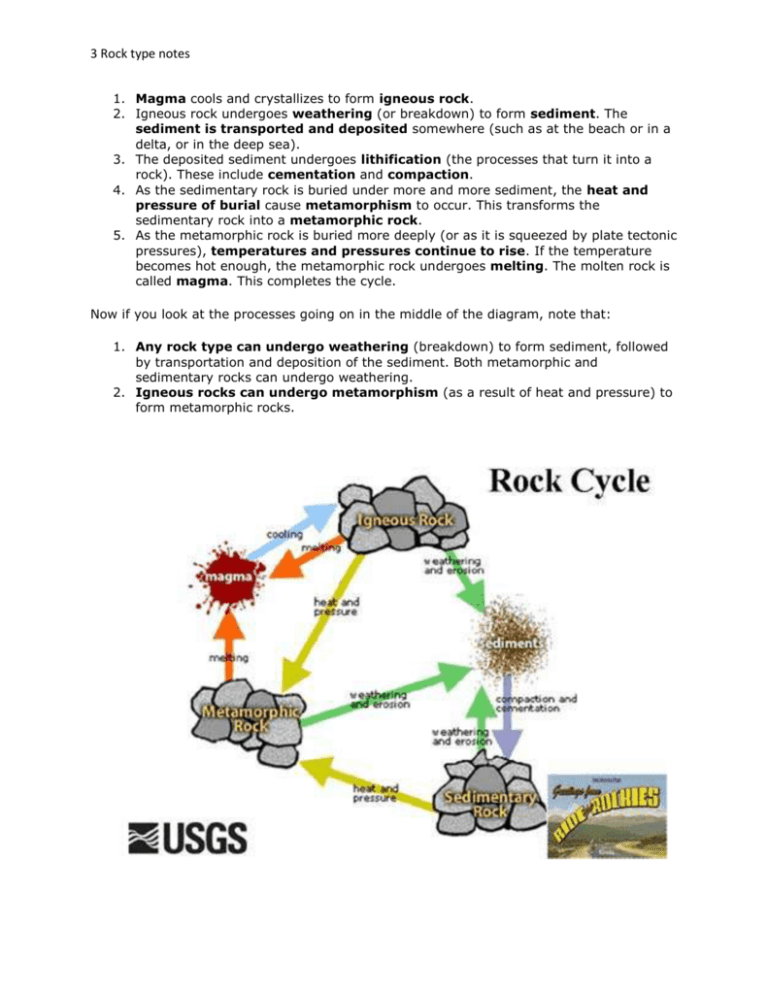
3 Rock type notes 1. Magma cools and crystallizes to form igneous rock. 2. Igneous rock undergoes weathering (or breakdown) to form sediment. The sediment is transported and deposited somewhere (such as at the beach or in a delta, or in the deep sea). 3. The deposited sediment undergoes lithification (the processes that turn it into a rock). These include cementation and compaction. 4. As the sedimentary rock is buried under more and more sediment, the heat and pressure of burial cause metamorphism to occur. This transforms the sedimentary rock into a metamorphic rock. 5. As the metamorphic rock is buried more deeply (or as it is squeezed by plate tectonic pressures), temperatures and pressures continue to rise. If the temperature becomes hot enough, the metamorphic rock undergoes melting. The molten rock is called magma. This completes the cycle. Now if you look at the processes going on in the middle of the diagram, note that: 1. Any rock type can undergo weathering (breakdown) to form sediment, followed by transportation and deposition of the sediment. Both metamorphic and sedimentary rocks can undergo weathering. 2. Igneous rocks can undergo metamorphism (as a result of heat and pressure) to form metamorphic rocks.




